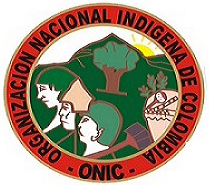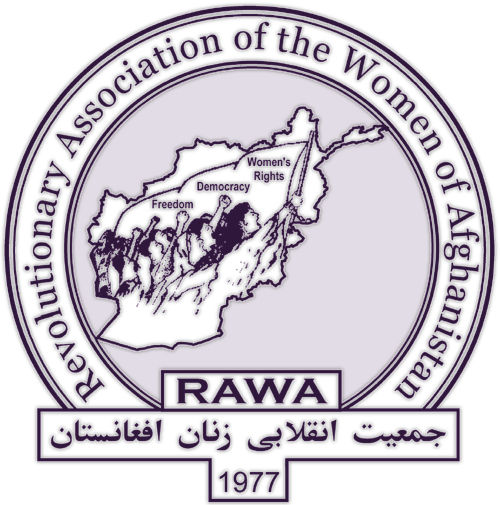Mexico Theater
Mexico rolls back 'drug war' cooperation with US
President Barack Obama said April 30 he will wait until he meets with his Mexican counterpart Enrique Peña Nieto this week to discuss Mexico's decision to curtail access of US security agencies. "I'm not going to yet judge how this will alter the relationship between the United States and Mexico until I've heard directly from them to see what exactly are they trying to accomplish," Obama said in Washington. Mexico confirmed days earlier that it has ended direct access by US law enforcement agents to their Mexican counterparts; now all communication is to be routed through the federal interior ministry, Gobernación.
Mexico: Guerrero teachers trash party offices
Thousands of teachers marched in Chilpancingo, the capital of the southwestern Mexican state of Guerrero, on April 24 to protest the Guerrero legislature's vote the day before to ratify a national education "reform" plan proposed by Mexican president Enrique Peña Nieto. The march—sponsored by the State Organizing Committee of Education Workers in Guerrero (CETEG), an organization of dissident local members of the National Education Workers Union (SNTE)—stopped at the headquarters of various political parties, where masked participants vandalized offices. The main damage was at the office of Peña Nieto's party, the centrist Institutional Revolutionary Party (PRI); the attackers, armed with clubs, broke windows, threw furniture, papers and plants into the street, tore up a photograph of the president and started a fire in the office, which firefighters put out. There were also attacks on the offices of the center-right National Action Party (PAN), the center-left Party of the Democratic Revolution (PRD) and social democratic Citizens' Movement (formerly Convergence for Democracy).
Mexico: Monsanto pushes for more GMO corn
As of April 26 environmental activists still hadn't learned the Mexican government's response to requests that the Missouri-based biotech giant Monsanto Company filed on March 26 for permission to expand the sowing of transgenic corn in four northern and western states. Monsanto asked for clearance to sow commercial crops in 28 municipalities in the state of Chihuahua, 11 in Coahuila and nine in Durango. These requests were in an addition to filings it made in January and February to carry out noncommercial pilot projects in the same municipalities and in Comondú in Baja California Sur. Another biotech company, Swiss-based Syngenta AG, filed on March 26 for permission to carry out pilot projects in the state of Sinaloa. People opposing the use of genetically modified organisms (GMO) for crops say the total requests would affect 12 million hectares.
Mexico: violence escalates in Michoacán
Violence continues to escalate in Mexico's west-central state of Michoacán, with bus transportation suspended to the towns of Apatzingán, Buenavista, Tepalcatepec and Coalcomán following a series of clashes there April 28, leaving the area effectively cut off from the outside world. At least 10 were killed in the area, in the state's Tierra Caliente region, April 29. The municipal presidency building in Buenavista remains under occupation by the Community Police, a citizen's self-defense patrol, which has seized public buildings in the town, accusing the "official" authorities of being in league with narco gangs. Several families from Buenavista have been displaced by the fighting there, and have taken refuge in Apatzingán. (Reuters, April 29; Milenio, Radio Formula, April 28)
Mexico: thousands march for release of Chiapas schoolteacher
Some 15,000 protesters marched in Tuxtla Gutiérrez, capital of the southeastern Mexican state of Chiapas, on April 19 to demand the release of Alberto Patishtán Gómez, an indigenous schoolteacher who has been serving a 60-year sentence since 2000 for his alleged involvement in the killing of seven police agents in El Bosque municipality in June of that year. Patishtán is a supporter of the rebel Zapatista National Liberation Army (EZLN). Actions demanding his release have taken place in at least 11 countries over the past year.
Mexico: narco-violence from Yucatan to Rio Grande
Six people were strangled to death and one decapitated in the Mexican tourist resort of Cancún April 14—the latest mass killing to strike the city in the last few weeks. Police found the bodies of the five men and two women in a shack in the outskirts of the Yucatan Peninsula city, which has largely escaped the drug-related violence that has rocked Acapulco, a faded tourist destination on the Pacific coast. Quintana Roo authorities said the vicitms were small-scale drug dealers. In a separate incident that day, police found the body of another man in Cancún who had been gagged, bound and wrapped in sheets. (AP, April 15) The slayings come one month after seven were killed when gunmen burst into Cancún's La Sirenita (Little Mermaid) bar, targeting members of the city's taxi-drivers who were holding a meeting there. Several Cancún taxi drivers had been arrested recently for selling drugs or participating in drug-related killings, authorities said. (AP, Univision, March 15)
Mexico: Guerrero teachers form alliances
Dissident teachers in the southwestern Mexican state of Guerrero continued their protests against planned changes in the educational system on April 10 with a march in Chilpancingo, the state capital, that brought together a broad range of grassroots and labor groups. According to the State Organizing Committee of Education Workers in Guerrero (CETEG), the protest's sponsor, 100,000 people participated, making the march the largest in the state since 1984; Guerrero's Governance Secretariat estimated the crowd at 40,000. At a concluding rally in the city's Zócalo, the main plaza, the organizers announced the formation of a new coalition, the Guerrero Popular Movement (MPG). Commentators noted that a popular uprising that paralyzed the neighboring state of Oaxaca in the summer and fall of 2006 featured a similar coalition, the Popular Assembly of the Peoples of Oaxaca (APPO); the national daily El Economista wrote that the groups forming the coalition in Guerrero were even more radical than the ones that made up the Oaxaca organization.
Mexico: Michoacán tipping into war
At least 15 were killed April 10 in a series of confrontations in Mexico's increasingly conflicted Michoacán state. The first confrontation began when federal police aboard a helicopter spotted armed men traveling in four vehicles at Charapando in the muncipality of Gabriel Zamora. The gunmen opened fire on the agents, who shot back and killed five, a police statement said, adding that one of those killed was high in the leadership structure of a local drug cartel, which was not named. Two police agents were reported wounded. Hours later in the town of Apatzingan, federal agents were accompanying a procession commemorating the anniversary of the death of Mexican revolutionary Emiliano Zapata when gunmen opened fire with AK-47s. Police returned fire, killing one. Another eight were killed elsewhere in Apatzingán, when gunmen attacked a police checkpoint where trucks full of harvested lime were backed up; two police were injured, but the dead were all civilians. Schools in Apatzingán and Buenavista Tomatlán municipalities have been closed due to the violence.















Recent Updates
1 day 16 hours ago
4 days 15 hours ago
5 days 19 hours ago
5 days 19 hours ago
6 days 8 hours ago
6 days 8 hours ago
6 days 11 hours ago
6 days 11 hours ago
6 days 11 hours ago
1 week 2 days ago